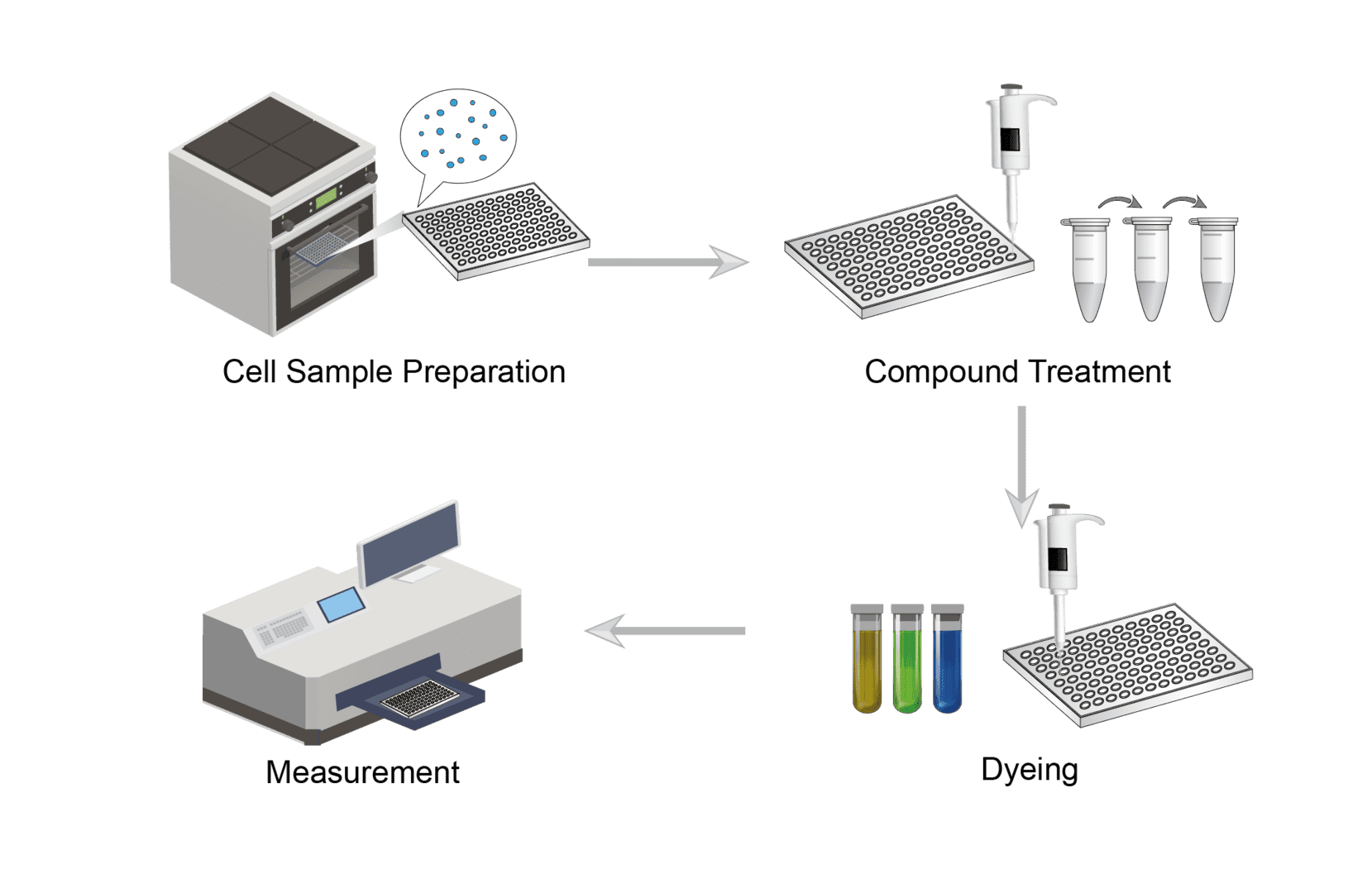Cytotoxicity Assay Protocol & Troubleshooting
Cytotoxicity is the degree to which a substance causes damage to cells. Cytotoxicity assays can be used to measure the ability of a cytotoxic compound to cause cell damage or death. It is based on the principle of measuring events that occur during cell death events, such as the measurement of cell membrane integrity. The technique is widely used to screen compound libraries for cytotoxicity in basic research and drug discovery.
Cytotoxicity assays are usually based on the assessment of cell membrane damage. Common cytotoxicity assays include enzyme leakage assays, membrane impermeable dyes, amine-reactive dyes, dye combinations, etc. Please see below for a general protocol on cytotoxicity assays. A full detailed description of the protocol includes, reagents and solutions, assay procedures, troubleshooting, etc.
Solutions and Reagents
| Stages | Solutions and Reagents |
| Cell Preparation | Assay buffer, assay medium, fixation solution |
| Treatment | Dilution buffer, dye solution, washing buffer |
Cytotoxicity Assay Procedure

Collect the cells and count them. Wash and prepare cell suspension with assay buffer. Dilute the cell suspension in the assay medium to the appropriate concentration. Add a quantitative amount of cell suspension to the wells of a 96-well plate. Incubate the plate in the incubator for the appropriate time.
Prepare your test compound. Perform serial dilutions as appropriate. Then add equal amounts of compound to each well. And set up positive and negative controls on the plate. Finally incubate the plate in a humidified incubator for the appropriate amount of time.
Select the appropriate dye. You can use DNA dyes to stain cells with damaged membranes. As well you can use amine-reactive dyes to weakly stain live cells and strongly stain cells with damaged membranes. Add equal amounts of the dye solution to each well and stain in the dark at room temperature. After incubation, wash to remove the staining solution.
Measure the absorbance at the reference wavelength with a microplate reader. Correct for background by subtracting the control from all sample readings. Calculate the percentage of cytotoxicity using the fixed formula.
Troubleshooting
Please review our troubleshooting guide for cytotoxicity assays, including specifically what can go wrong and what to do about it.
Low absorbance value
- Cell density causes. This is most likely due to low cell density. We recommend repeating the experiment to determine the optimal cell count.
High spontaneous control absorbance
- Cell density causes. There is high signal due to high cell density. Please repeat the experiment to determine the optimal cell count for the assay.
- Pipetting causes. It may also be caused by excessive forceful pipetting during cell spreading. Please ensure that the cell suspension is handled gently during plate setup.
High medium control absorbance
- Cell culture medium causes. High concentration of certain substances in the cell culture medium causes high absorbance. You can test the medium components and try to reduce their concentration.
High variability of absorbance well-to-well
- Bubble causes. There may be air bubbleigh variability of absorbance well-to-wels in the well. Check to see if air bubbles are present in the hole, if so, you will need to break the bubbles with a syringe needle.
we offer a common assay protocol and troubleshooting guide for your cytotoxicity assay. In addition, a range of assay reagent products are available at Creative Biolabs. You can browse our product list to make your selection, and please contact us with any questions or for a customized service.
For research use only. Not intended for any clinical use.
This site is protected by reCAPTCHA and the Google Privacy Policy and Terms of Service apply.



